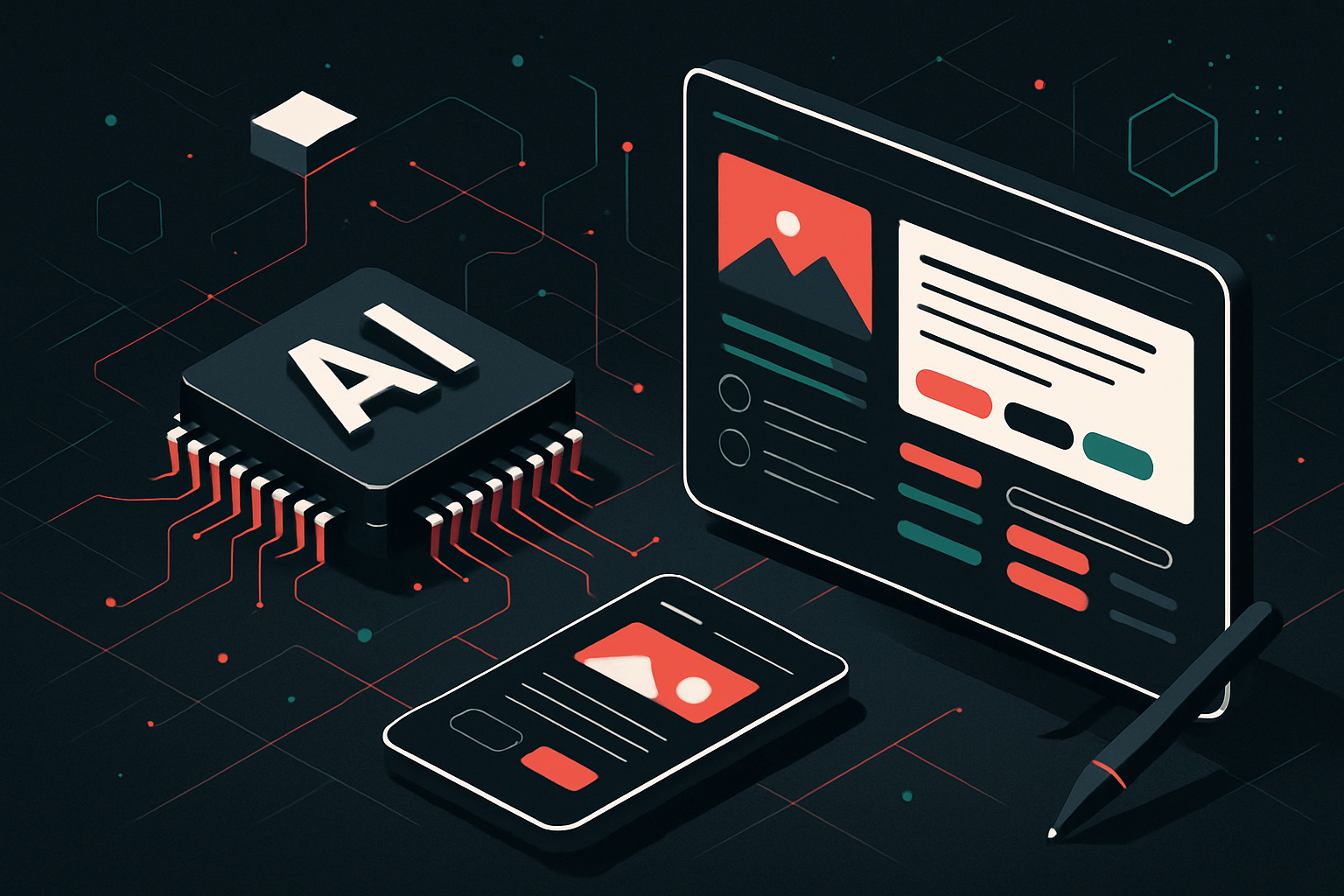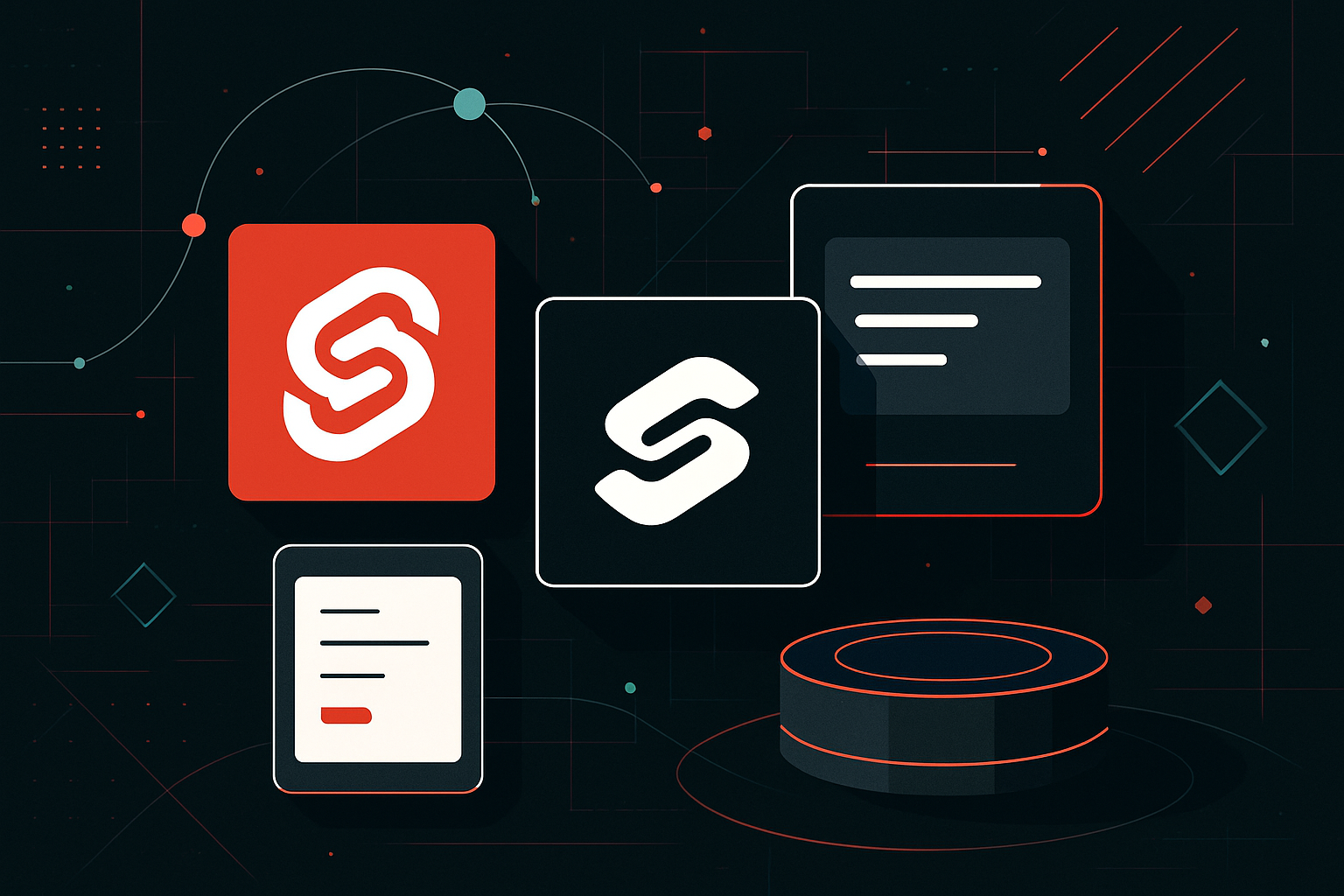Using AI to Automate UI Design

Benefits and Use Cases of AI in UI Design
| Benefit | Description | Example Use Case |
|---|---|---|
| Speed & Efficiency | Automates repetitive design tasks, reducing manual workload | Auto-generating layout mockups from wireframes |
| Consistency | Ensures UI elements follow style guides and design systems | Enforcing color and typography standards |
| Personalization | Tailors UI to user preferences and behaviors | Adaptive dashboards based on user activity |
| Accessibility | Detects and improves accessibility issues automatically | Flagging low-contrast text |
| Data-Driven Design | Suggests improvements based on analytics and user feedback | Recommending button placement changes |
Core Techniques for AI-Powered UI Automation
- Generative Design Models
- Use deep learning models (GANs, VAEs) to generate new UI layouts and components.
-
Example: Figma’s “AI Design” plugins leveraging generative models to create alternative layouts.
-
Natural Language Processing (NLP)
- Converts textual descriptions or user stories into UI code or wireframes.
-
Example: “Describe a form with name, email, and submit button” → Generates a React component.
-
Computer Vision
- Analyzes screenshots or sketches to extract and recreate UI components.
-
Example: Microsoft’s Sketch2Code converts hand-drawn sketches to HTML.
-
Reinforcement Learning
- Optimizes user flows and interface arrangements based on user interaction data.
- Example: Dynamic menu rearrangement to minimize task completion time.
Automating UI Design: Practical Workflows
1. From Text to UI Components
Tools: [GPT-4 with Code Interpreter], [Locofy.ai], [Uizard.io]
Step-by-step:
1. Input textual requirements (e.g., “Login form with email, password, and forgot password link”).
2. AI parses the instructions.
3. Code or design is generated (e.g., React, Flutter, Figma frame).
Code Example: (Using OpenAI API to generate a simple React form)
import openai
prompt = "Create a React functional component for a login form with email, password, and a forgot password link."
response = openai.ChatCompletion.create(
model="gpt-4",
messages=[{"role": "user", "content": prompt}]
)
print(response['choices'][0]['message']['content'])
2. From Sketch to Code
Tools: [Microsoft Sketch2Code], [Uizard.io]
Process:
1. Upload a hand-drawn sketch or image.
2. Computer vision model detects UI elements (buttons, inputs, labels).
3. Output is structured HTML/CSS or design file.
Sample Output:
<div class="login-form">
<input type="text" placeholder="Email" />
<input type="password" placeholder="Password" />
<a href="#">Forgot Password?</a>
<button>Login</button>
</div>
3. Design System Enforcement
Tools: [Figma AI Plugins], [Adobe Sensei]
Workflow:
– AI analyzes components to ensure adherence to a design system.
– Suggests or auto-applies style corrections (colors, spacing, fonts).
Example Table: Automated Design Audit
| Issue Detected | Severity | Auto-Fix Suggested | Component |
|---|---|---|---|
| Color contrast low | High | Adjust to #222 on #fff | Button |
| Inconsistent font size | Medium | Change to 16px | Input Label |
| Missing alt text | High | Add description prompt | Image |
4. Data-Driven UI Optimization
Tools: [Google Optimize], [Amplitude Experiment]
Method:
– AI analyzes user interaction data (heatmaps, session replays).
– Recommends or tests alternative UI arrangements via A/B or multivariate tests.
Example:
| Variant | Conversion Rate | Improvement |
|—————-|—————-|————-|
| Original | 2.1% | — |
| AI-Suggested | 2.8% | +0.7% |
Integrating AI into UI Design Pipelines
Figma Plugin Example
Automate color palette creation with AI:
- Install a plugin like “ColorMind” or build a custom plugin.
- Select a primary color or image.
- AI suggests a palette following accessibility and brand guidelines.
- Apply directly to the design system.
Code Automation Example
Transforming design tokens to code:
// AI-generated design tokens
const designTokens = {
primaryColor: "#0057FF",
secondaryColor: "#FFD600",
fontSizeBase: "16px"
};
// Use in styled-components
const Button = styled.button`
background: ${designTokens.primaryColor};
font-size: ${designTokens.fontSizeBase};
`;
Best Practices for AI-Driven UI Automation
- Human-in-the-loop: Always review AI-generated UI for edge cases and brand alignment.
- Data Privacy: Anonymize and secure user data in personalization and optimization workflows.
- Accessibility First: Validate that AI suggestions meet WCAG standards.
- Continuous Feedback: Incorporate designer and user feedback to improve AI models.
- Version Control: Track changes and roll back AI-generated modifications if needed.
Comparison of AI Tools for UI Automation
| Tool/Platform | Key Features | Integration | Use Case Example |
|---|---|---|---|
| Figma AI Plugins | Generate layouts, auto-correct styles | Figma | Rapid prototyping |
| Uizard | Sketch-to-design, text-to-UI | Web-based | Early wireframing |
| Locofy.ai | Design to code (React, Next.js, Flutter) | Figma, Adobe XD | Code handoff |
| Sketch2Code | Image/sketch to HTML | Web-based | Digitizing whiteboards |
| Adobe Sensei | Style transfer, content-aware layouts | Adobe XD, Photoshop | Design system enforcement |
Technical Challenges and Considerations
- Ambiguity in Requirements: NLP models may misinterpret vague descriptions.
- Complex Interactions: AI struggles with advanced animations and custom interactions.
- Context Awareness: Models need access to brand guidelines and user personas.
- Performance: Generated code/designs may need optimization for production readiness.
- Security: Avoid leaking sensitive design data to third-party AI services.
Example: End-to-End Automated UI Generation
1. Input:
“Create a dashboard with a sidebar, top navigation, and three cards showing sales, users, and revenue.”
2. AI Process:
– NLP parses the request.
– Generates a wireframe.
– Converts to React code with styled-components.
3. Output (React JSX):
<div className="dashboard">
<Sidebar />
<div className="main">
<TopNav />
<div className="cards">
<Card title="Sales" value="$12,300" />
<Card title="Users" value="2,430" />
<Card title="Revenue" value="$8,900" />
</div>
</div>
</div>
4. Designer Review:
– Adjust layout and styles as needed.
– Validate component hierarchy and data bindings.
By leveraging AI in these practical workflows, teams can automate significant portions of UI design, improve consistency, and accelerate product delivery while maintaining high standards of usability and accessibility.




0 thoughts on “Using AI to Automate UI Design”